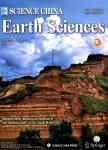Oceanic environmental changes of subarctic Bering Sea in recent 100 years: Evidence from molecular fossils
Oceanic environmental changes of subarctic Bering Sea in recent 100 years: Evidence from molecular fossils作者机构:Key Laboratory of State Oceanic Administration The Second Institute of Oceanography Hangzhou 310012 China Key Laboratory of State Oceanic Administration The Second Institute of Oceanography Hangzhou 310012 China Key Laboratory of State Oceanic Administration The Second Institute of Oceanography Hangzhou 310012 China Key Laboratory of State Oceanic Administration The Second Institute of Oceanography Hangzhou 310012 China Key Laboratory of State Oceanic Administration The Second Institute of Oceanography Hangzhou 310012 China Key Laboratory of State Oceanic Administration The Second Institute of Oceanography Hangzhou 310012 China
出 版 物:《Science China Earth Sciences》 (中国科学(地球科学英文版))
年 卷 期:2005年第48卷第4期
页 面:555-564页
核心收录:
学科分类:07[理学] 08[工学] 0708[理学-地球物理学] 0704[理学-天文学]
基 金:supported by the National Major Basic Research Devel opment Plamning(Gramt No.G2000078500) the National Natural Science F oundation ofChina(Grant No.40176015) China's First Arctic Scientific Expedtion
主 题:subarctic, molecular fossil, paleoenvironment, record of stratigraphy.
摘 要:The core sample B2-9 from the seafloor of the subarctic Bering Sea was dated with 210 Pb to obtain a consecutive sequence of oceanic sedimentary environments at an interval of a decade during 1890—1999. A variety of molecular fossils were detected, including n-alkanes, isoprenoids, fatty acids, sterols, etc. By the characteristics of these fine molecules (C27, C28, and C29 sterols) and their molecular indices (Pr/Ph, ∑C+22/∑C?21, CPI and C18∶2/C18∶0) and in con- sideration of the variation of organic carbon content, the 100-year evolution history of subarctic sea paleoenvironment was reestablished. It is indicated that during the past 100 years in the Arctic, there were two events of strong climate warming (1920—1950 and 1980—1999), which resulted in an oxidated sediment environment owing to decreasing terrigenous organic matters and increasing marine-derived organic matters, and two events of transitory climate cooling (1910 and 1970—1980), which resulted in a slightly reduced sediment environment owing to increasing terrigenous organic matters and decreasing marine-derived organic matters. It is re- vealed that the processes of warming/cooling alternated climate are directly related to the Arctic and global climate variations.



